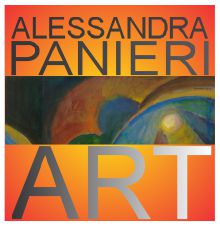This beautiful and mysterious icon had sat first in my maternal grandparents' bedroom and then in my parents' dining room for as long as I could remember. It had always been referred to as the “Russian Madonna”. The ornate gold and silver metal work and the severe features of the Madonna's painted face had made me dream as a child not only of far away lands, snow, adventure and felted yurts, but it had also aroused my curiosity about the mystical religious rites and the tears and blood that it must have witnessed during its two centuries of life.
The story of the Russian Madonna with our family began in 1943 when Italy and Germany invaded Russia. The military campaign ended with the loss of 600,000.00 Italian soldiers in what that has been known ever since as the "Great Russian Retreat". My grandfather, an infantry captain, was one of the few to make it back. He attributed his survival to the power of the 12" x 20" wooden tablet he clung onto when marching through blizzards and chaos. This small piece of art had been given to him by a Russian family he had saved from starvation by sharing the food supplies he was in charge of.
The icon eventually made its way to Turin where it remained until 2011, and then to South Africa where my mother had retired. There it sat in her sunny bedroom in Cape Town until this May, when she brought it with her on her visit to Seattle.
The Madonna Changes Identity
In the family it had always been referred to as the "Russian Madonna" so it arrived in Seattle with that name. It was presented to us at a family dinner, wrapped in orange silk and accompanied by a memorable evening of stories about my grandfather, the Great War and a mini lecture about the artistic and religious significance of this type of icon. At the end of this emotional presentation, when the painting was passed around, questions were raised about the absence of the baby and about the identity of its subject. My youngest son noticed two words in Russian and it took him a few minutes and an IPad to discover that the icon was not a "Madonna" but St Parascheva, also known as St Friday or St Petka, a saint venerated by women in the Balcans, Moldova, Ukraine and Southern Russia. More research revealed the interesting theory that Saint Parascheva, an early Christian martyr of Greek origin, is the Christian incarnation of the pre-Christian, slavic female Earth Goddess Mokosh or Deva. St Parascheva's is considered by the Russian Orthodox tradition the protector of women, of fertility, of the home, of water and of spinning. I like to stretch the theory and imagine her as the patron saint/goddess of creativity. The shifting identity and interpretations of its subject only add to the mystery of this piece and the symbolism and the family history of devotion associated with it make this art work for us truly invaluable.
Nonna Mimma presenting the St Parascheva icon, June 2014



